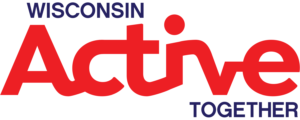A reminder that the application for the 2019 Urban Forestry Grants is open! Cities, villages, towns, counties, tribes and 501(c)(3) nonprofit organizations in or conducting their project in Wisconsin are encouraged to apply for a regular or startup 2019 Department of Natural Resources Urban Forestry Grant! The grants range from $1,000 to $25,000, and grant recipients must match each grant dollar for dollar. A startup grant of up to $5,000 is available for communities that want to start or restart a community forestry program. Grants are awarded to projects that align with state and national goals for increasing the urban forest canopy and the benefits it provides.
Urban wood
Packers participate in 8th year of tree planting
 The Green Bay Packers, along with corporate sponsors Essity and Green Bay Packaging Inc., marked another successful year of the “First Downs for Trees” program by planting trees at Ashwaubenon’s Klipstine Park on Thursday, July 19th. These sponsors provided the funds for the planting 444 trees in 17 Brown County communities. These trees will provide total lifetime benefits of $2,132,200. Continue reading “Packers participate in 8th year of tree planting”
The Green Bay Packers, along with corporate sponsors Essity and Green Bay Packaging Inc., marked another successful year of the “First Downs for Trees” program by planting trees at Ashwaubenon’s Klipstine Park on Thursday, July 19th. These sponsors provided the funds for the planting 444 trees in 17 Brown County communities. These trees will provide total lifetime benefits of $2,132,200. Continue reading “Packers participate in 8th year of tree planting”
Funding available to plant trees!
The Bay-Lake RPC announced available funding under the 2019 WI RPCs & DNR Great Lakes Basin Tree Planting grant program. This program is a partnership between Bay-Lake RPC, Wisconsin DNR, East Central Wisconsin RPC, Northwest Wisconsin RPC, and Southeastern Wisconsin RPC. Continue reading “Funding available to plant trees!”
Wisconsin Urban Forestry Council announces new members
The Wisconsin Urban Forestry Council is pleased to announce the addition of three new members to the group. We are especially pleased to have increased our geographic and professional diversity and look forward to working with them on issues related to Wisconsin’s urban and community forests. Continue reading “Wisconsin Urban Forestry Council announces new members”
Unique project: DeForest using thermally modified ash from their parks, for their parks
In the wave of EAB and amid some park reconstruction projects, the folks in the village of DeForest thought, “why don’t we put some of these trees to work for us.” After decades of providing shade and shelter, several large ash trees came down in Fireman’s Park. Park staff thought it would be fitting to reuse what they could from these stately trees whose fate had been sealed by EAB, which was confirmed in DeForest in 2015. Continue reading “Unique project: DeForest using thermally modified ash from their parks, for their parks”
Getting active in Wisconsin’s urban forest
 By Rob Fontella, fontella@wisc.edu, healthTIDE UW-Madison Public Health
By Rob Fontella, fontella@wisc.edu, healthTIDE UW-Madison Public Health
As the weather gets warmer, Wisconsinites are getting out there and enjoying their community and the natural areas the state has to offer. Recently a new effort was launched to encourage communities in Wisconsin to become part of a campaign recognizing the community’s efforts to promote active lifestyles. Continue reading “Getting active in Wisconsin’s urban forest”
New funding opportunity with American Transmission Company
 American Transmission Co (ATC) has new program that provide funding for the purchase of seeds, plugs or plants that are low-growing perennials that can be planted within a transmission line right-of-way. This program in conjunctions with the ATC’s existing Community Planting Program will help create greener communities. Learn more about both programs through the press release from ATC.
American Transmission Co (ATC) has new program that provide funding for the purchase of seeds, plugs or plants that are low-growing perennials that can be planted within a transmission line right-of-way. This program in conjunctions with the ATC’s existing Community Planting Program will help create greener communities. Learn more about both programs through the press release from ATC.
Continue reading “New funding opportunity with American Transmission Company”
Finding bird friendly trees
If you are looking for bird friendly trees and shrubs a database has been created that can help. The Audubon Native Plants Database allows you to enter a zip code and get a list of bird friendly native plants. You can filter based on plant type and what type of bird the plant attracts. The database also shows what kind of birds favor particular plants.
Urban Forestry Grants application and guidance open for review
By Alex Elias, Urban Forestry Grants Manager
Updated guidance for the Urban Forestry Grants program has been posted for public input and will be available for a 21-day comment period. Guidance is available for both internal and external review from Tuesday, May 15, 2018 through Monday, June 4, 2018 on the proposed program guidance open for public comment website. Continue reading “Urban Forestry Grants application and guidance open for review”
Insights from the Wisconsin Urban Landowner Survey inform tree care outreach
By: Katy Thostenson, DNR social science analyst (Madison), kathryn.thostenson@wisconsin.gov, 608-535-7049
 Homeowners in Wisconsin feel the top 5 most important benefits provided by the trees in their yard are:
Homeowners in Wisconsin feel the top 5 most important benefits provided by the trees in their yard are:
1) Beauty
2) Shade and cooling
3) Improved air quality
4) Privacy, and
5) Making their neighborhood a better place to live
This list of homeowners’ perceived benefits from their trees is just one valuable insight gathered from the 2017 Wisconsin Urban Landowner Survey. More than 1,700 landowners responded to the survey from Green Bay, Madison, Milwaukee and Wausau, providing insights about their attitudes around tree care, their concerns about tree risks, and their tree care behaviors such as pruning and planting. Continue reading “Insights from the Wisconsin Urban Landowner Survey inform tree care outreach”
